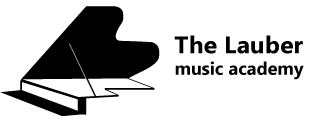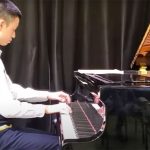Comparing Piano Teaching Methods: Suzuki vs traditional note reading
As a professional piano teacher, I have had the privilege of working with many students who have learned to play the piano through different piano teaching methods. The two most popular methods of learning to play the piano are the Suzuki piano teaching method and the traditional piano teaching method of learning by reading notes. Both methods have their advantages and disadvantages, and in this blog post, I will discuss these pros and cons in detail.
Piano teaching Method: Suzuki
The Suzuki piano teaching method is an auditory-based method of teaching piano, which focuses on listening and repetition as the main means of learning. This method is based on the idea that children can learn to play music just as they learn to speak their native language. One of the main advantages of the Suzuki method is that it encourages young children to play by ear, which can help to develop their musical intuition and enhance their musical creativity. Additionally, this method can be more accessible to children who struggle with reading music, as it does not require the same level of musical literacy as the traditional method.
However, the Suzuki method also has some disadvantages. One of the main drawbacks is that it can be less effective for children who have a strong visual learning style, as it does not involve reading notes. Additionally, the Suzuki method can be more time-consuming than the traditional method, as it requires a lot of repetition and practice to master a piece of music. Furthermore, children who learn by ear may struggle when they reach a higher level of musical literacy, as they will need to learn to read music in order to play more complex pieces.
Piano Teaching Method: traditional note reading
In contrast, the traditional piano teaching method of learning by reading notes is a more structured and systematic approach to learning the piano. The main advantage of this method is that it provides students with a solid foundation in music theory and musical literacy, which is essential for playing more complex pieces of music. Additionally, this method is more effective for children who have a strong visual learning style, as they can see and understand the music they are playing.
However, the traditional method also has some disadvantages. One of the main drawbacks is that it can be less accessible to children who struggle with reading music, as it requires a strong foundation in musical literacy. Furthermore, this method can be less engaging for children who are just starting out, as it can be less intuitive and less creative.
In conclusion, both the Suzuki method and the traditional method of learning by reading notes have their advantages and disadvantages. Ultimately, the best approach will depend on the individual student and their learning style.
We here at the Lauber Music Academy are proud to have among our teachers one who is certified in the Suzuki method and can teach children as young as 4 years old. As a professional piano teacher, I believe that it is important to tailor the lessons to the individual needs of each student, and to help them to find the method that works best for them. Please feel free to contact us if you want to discuss this further.



